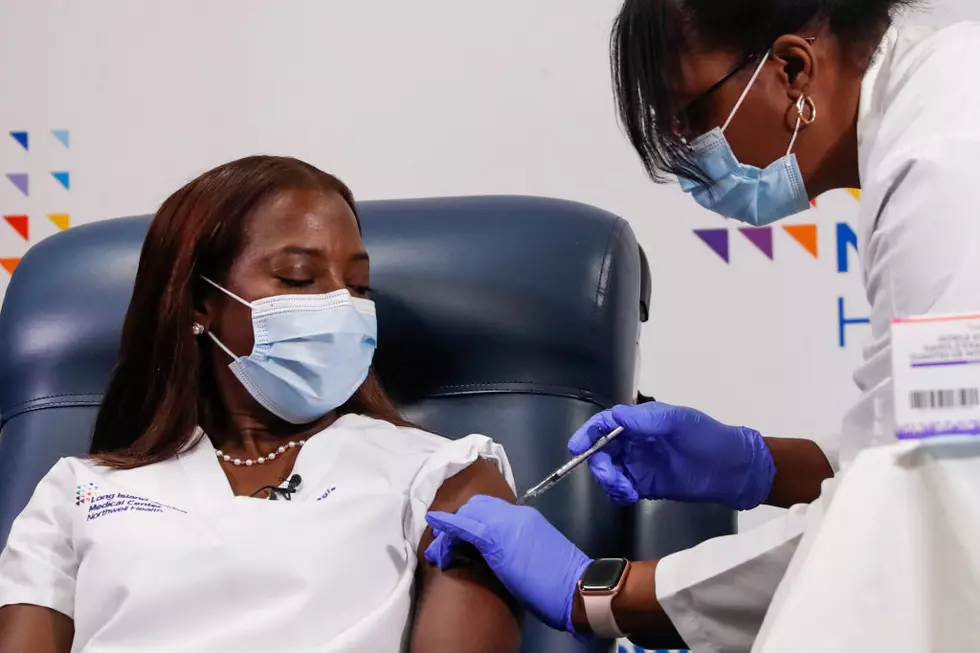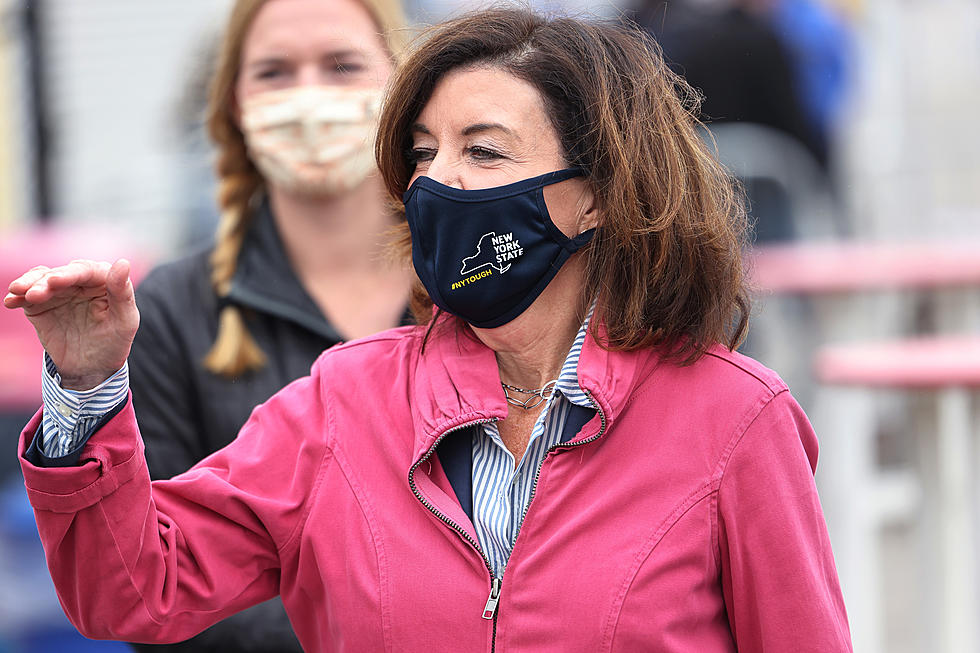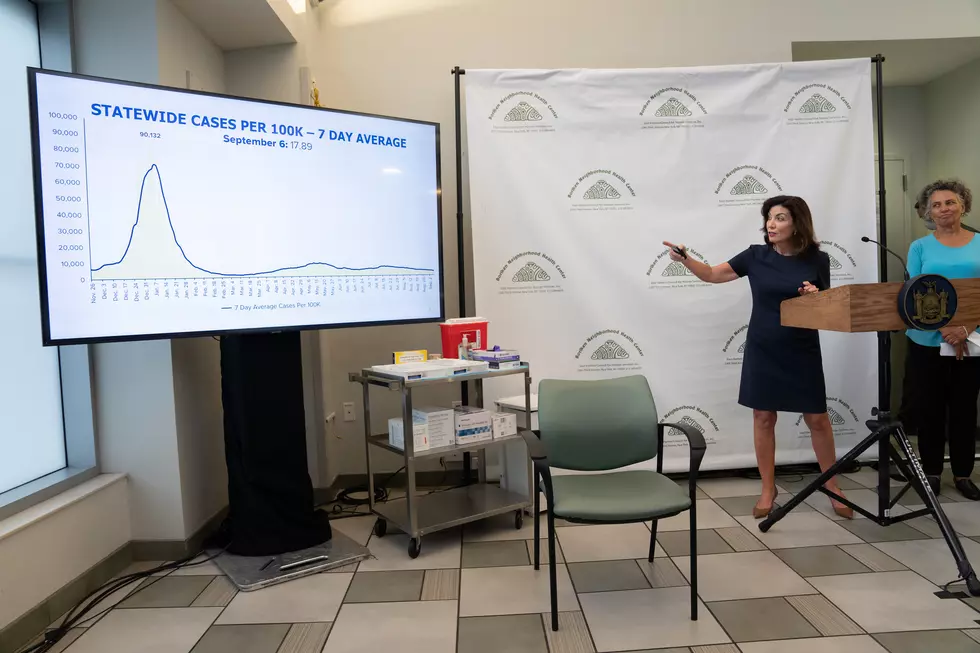
New Rules For New Yorkers at Funerals, Religious Services
New York officials released a number of new guidelines you must follow when attending a funeral or religious service.

Enter your number to get our free mobile app
Physical Distancing
- For any religious or funeral service occurring indoors, limit the congregant/attendee capacity to 10 people for locations that are in Phase 1 and no more than 25% of the maximum occupancy for locations in Phase 2. If separate buildings are available for use, there may be multiple groups of 10 in separate buildings in Phase 1 or a maximum occupancy of 25% in separate buildings in Phase 2, so long as the buildings have separate entrances/exits and the groups don’t interact.
- A distance of at least 6 ft. must be maintained amongst all individuals at all times, unless safety or the core activity requires a shorter distance (e.g. pallbearing) or the individuals are members of the same household. However, any singing activity must provide for a distance between individuals of 12 ft., subject to additional protective measures.
- Any time employees, volunteers, and/or attendees must come within 6 ft. of one another (or 12 ft., if singing), they must wear acceptable face coverings, unless they are members of the same household. Prohibit the use of small spaces (e.g. elevators, vehicles) by more than one individual at time, unless all individuals are wearing face coverings. If occupied by more than one person, keep occupancy under 50% of maximum capacity.
- Limit in-person gatherings (e.g. rehearsals, congregational meetings) to 10 people or fewer in Phase 1 and to 25% of maximum occupancy in Phase 2.
- Prohibit holding or shaking hands of members in different households during services or prayers.
- Limit activities involving singing (e.g. choir, soloist, cantor, musical ensemble), unless 12 ft. of separation can be provided between individuals or additional distancing or physical barriers can reduce transmission of respiratory droplets.
- Establish designated areas for pickups and deliveries.
Protective Equipment
- Provide workers with an acceptable face covering at no cost to the worker and have an adequate supply of coverings in case of replacement.
- Acceptable face coverings include but are not limited to cloth (e.g. homemade sewn, quick cut, bandana), surgical masks, and face shields.
- Face coverings are required at all times except while seated, provided all individuals are 6 ft. apart except for immediate household members. Faith leaders, officiants, volunteers, and/or attendees must be prepared to don a face covering if another person unexpectedly comes within 6 ft. (e.g. when walking to seats).
- Face coverings must be cleaned or replaced after use and may not be shared. Consult the CDC guidance for additional information on cloth face coverings and other types of personal protective equipment (PPE), as well as instructions on use and cleaning.
- If providing gowns or other garments, ensure they are cleaned and laundered between uses.
- Train workers on how to don, doff, clean (as applicable), and discard PPE. Limit the sharing of objects (e.g. religious texts, collection plates) as well as the touching of shared surfaces (e.g. pews, instruments, doors, railings); or, require individuals to wear gloves when in contact with shared objects or frequently touched surfaces; or, require individuals to sanitize or wash their hands before and after contact.
Hygiene and Cleaning
- Adhere to hygiene, cleaning, and disinfection requirements from the Centers for Disease Control and Prevention (CDC) and Department of Health (DOH) and maintain cleaning logs on site that document date, time, and scope of cleaning.
- Provide and maintain hand hygiene stations on site, including handwashing with soap, water, and paper towels, as well as an alcohol-based hand sanitizer containing 60% or more alcohol for areas where handwashing is not feasible. Hand sanitizer must be placed throughout the location for use by all attending or working.
- Provide and encourage participants to use cleaning/disinfection supplies before and after use of shared and frequently touched surfaces, followed by hand hygiene.
- Ensure distancing rules are adhered to in restrooms by reducing capacity, where feasible.
- Regularly clean and disinfect the location or facility and conduct more frequent cleaning and disinfection for high risk areas used by many individuals (e.g. restrooms) and for frequently touched surfaces.
- If cleaning or disinfection products or the act of cleaning and disinfecting causes safety hazards or degrades the material (e.g. religious artifact), put in place hand hygiene stations, supply gloves, and/or limit the number of individuals touching such material.
- For funeral-related services, prohibit touching, hugging, or kissing the body of a deceased person who had confirmed or suspected COVID-19, per CDC guidance. Prohibit shared
Communication
- Affirm you have reviewed and understand the state-issued industry guidelines, and that you will implement them.
- Post signage throughout the facility to remind individuals to adhere to proper hygiene, social distancing rules, appropriate use of PPE, and cleaning and disinfecting protocols.
- Conspicuously post completed safety plans on site
Screening
- Implement mandatory health screening assessment (e.g. questionnaire, temperature check) for employees, faith leaders, and volunteers (but not attendees), asking about (1) COVID-19 symptoms in past 14 days, (2) positive COVID-19 test in past 14 days, and/or (3) close contact with confirmed or suspected COVID-19 case in past 14 days. Responses must be reviewed daily and documented.
- If an employee or faith leader tests positive for COVID19, immediately notify state and local health departments and cooperate with contact tracing efforts, including notification of potential contacts who had close contact with the worker, while maintaining confidentiality as required by state and federal law and regulations.
New Rules For New York Hair Salons Tops This Weeks Hudson Valley News
More From 94.3 Lite FM









